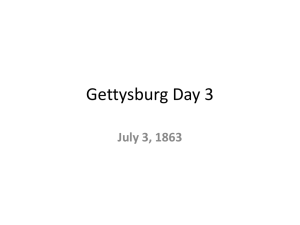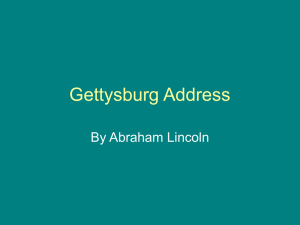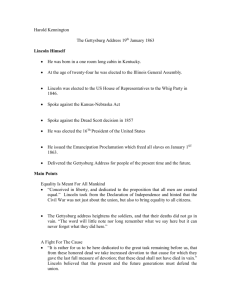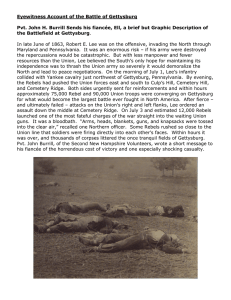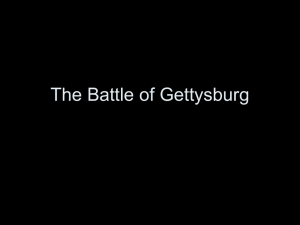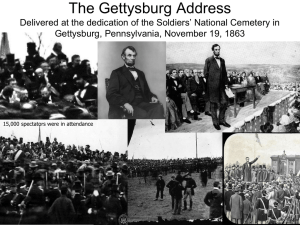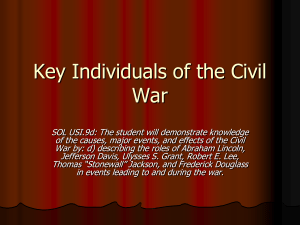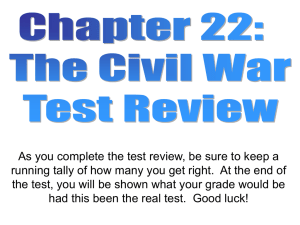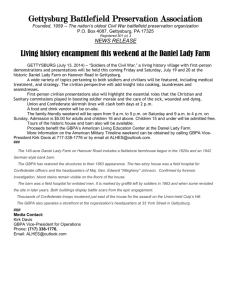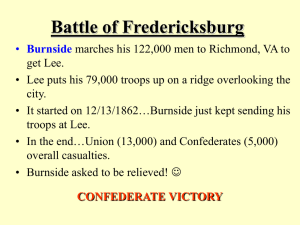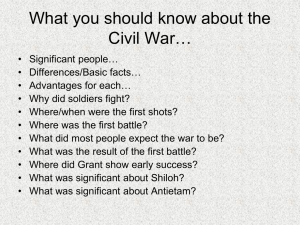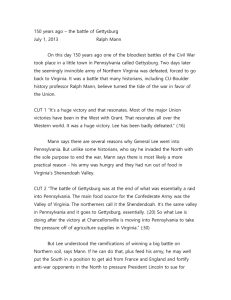Chapter 10 Multiple Choice in WORD
advertisement
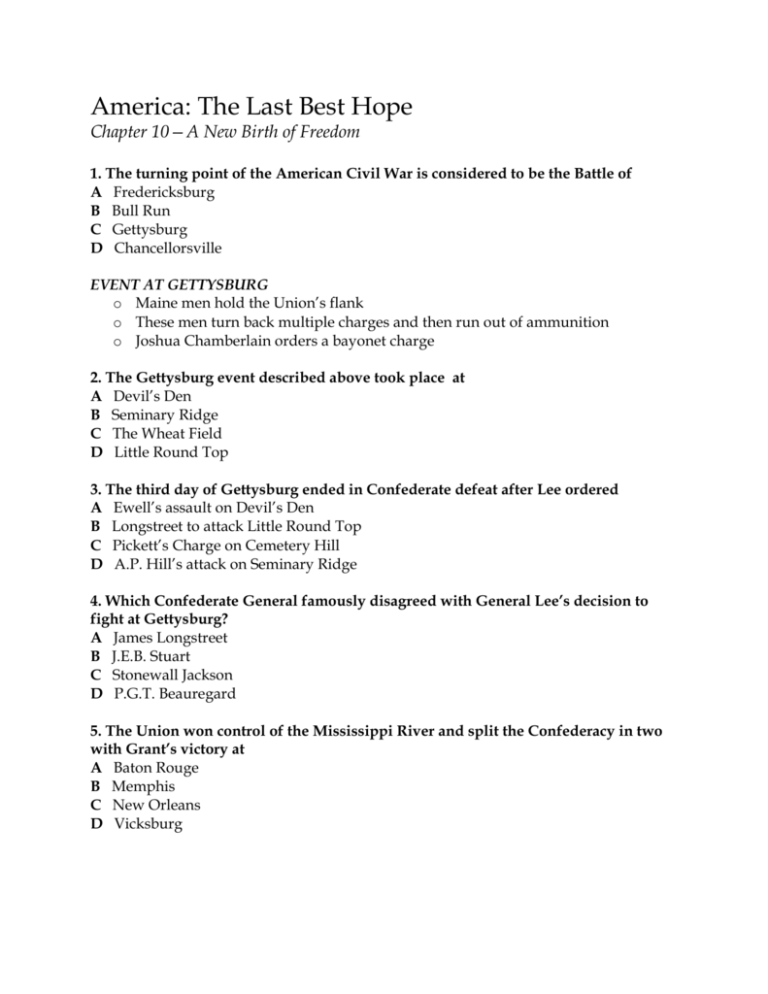
America: The Last Best Hope Chapter 10—A New Birth of Freedom 1. The turning point of the American Civil War is considered to be the Battle of A Fredericksburg B Bull Run C Gettysburg D Chancellorsville EVENT AT GETTYSBURG o Maine men hold the Union’s flank o These men turn back multiple charges and then run out of ammunition o Joshua Chamberlain orders a bayonet charge 2. The Gettysburg event described above took place at A Devil’s Den B Seminary Ridge C The Wheat Field D Little Round Top 3. The third day of Gettysburg ended in Confederate defeat after Lee ordered A Ewell’s assault on Devil’s Den B Longstreet to attack Little Round Top C Pickett’s Charge on Cemetery Hill D A.P. Hill’s attack on Seminary Ridge 4. Which Confederate General famously disagreed with General Lee’s decision to fight at Gettysburg? A James Longstreet B J.E.B. Stuart C Stonewall Jackson D P.G.T. Beauregard 5. The Union won control of the Mississippi River and split the Confederacy in two with Grant’s victory at A Baton Rouge B Memphis C New Orleans D Vicksburg 6. The worst draft riots in U.S. history took place in the summer of 1863 when Irish immigrants went on a rampage in A Boston B New York C Philadelphia D Washington D.C. “Fourscore and seven years ago, our fathers brought forth upon this continent a new nation, conceived in liberty and dedicated to the proposition that all men were created equal…that this nation, under God, shall have a new birth of freedom, and hat government of the people, by the people, for the people, shall not perish from the earth.” 7. The speech above was given by Abraham Lincoln at A Vicksburg B Antietam C Gettysburg D Fredericksburg 8. Trench warfare became a new deadly reality in the American Civil War near the end of the war around A Petersburg, Virginia B Chattanooga, Tennessee C Atlanta, Georgia D Chancellorsville, Virginia 9. “Copperheads” were the nickname given to A Democrats who supported Lincoln’s war effort B Republicans who supported the war C anti-war Northern Democrats D Southern Democrats who wanted to surrender 10. The 54th Massachusetts Regiment was famous because it A discovered “General Orders 191” that turned the tide at Antietam B accepted the Confederate final surrender in April of 1865 C was one of the first black regiments in the armed forces D “saved” the Union at the battle of Gettysburg at Devil’s Den o o o o Defeated and took Atlanta Army marched to Savannah, Georgia Ripped up railroad lines and burned plantations Killed livestock and burned fields 11. The event described above was called the A “Stroll to the Atlantic” B “Demolition of Georgia” C “Destruction of the South” D “March to the Sea” o o o o Defeated and took Atlanta Army marched to Savannah, Georgia Ripped up railroad lines and burned plantations Killed livestock and burned fields 12. The event described above was planned and commanded by which Union General? A George S. Meade B William Tecumseh Sherman C William S. Rosecrans D George Thomas 13. During the Civil War, a new national cemetery was created by Congress at A Arlington, Virginia B Richmond, Virginia C Fredericksburg, Virginia D Washington, D.C. 14. Robert E. Lee and his army finally surrendered at A Fredericksburg B Richmond C Petersburg D Appomattox 15. President Lincoln believed that the key to winning the war was to A encourage slave rebellions in the South B split the Confederacy in two C destroy Lee’s army D capture the Confederate capitol “I can make Georgia howl” 16. The quote above is representative of William Tecumseh Sherman’s military tactics that are known as A trench warfare B total war C guerilla warfare D insurgency 17. Lincoln was assassinated at A Ford’s Theater B the Executive Mansion C Capitol Hill D Arlington Cemetery 18. Robert E. Lee had to take chances like invading the North because the South had all of the disadvantages compared to the North except A smaller population B less industrial strength C fewer able officers D fewer miles of railroad
